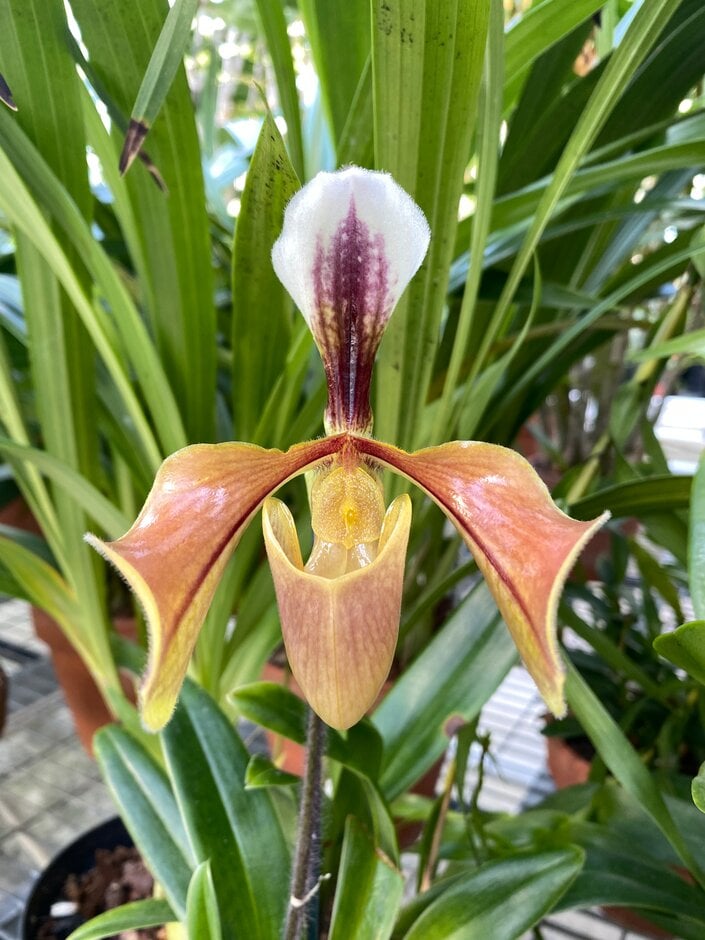Paphiopedilum villosum
villose paphiopedilum
A medium-sized, clump-forming, terrestrial orchid with strap-shaped, dull mid-green leaves, 25-40cm long and 3-4cm wide. Solitary, glossy, red-brown flowers, 8cm across, with green and brown upper sepals and light yellow-bronze to green pouches, appear from winter to spring on upright, 30cm tall, terminal stems.

Size
Ultimate height
0.1–0.5 metresTime to ultimate height
2–5 yearsUltimate spread
0.1–0.5 metresGrowing conditions
Moisture
Well–drainedpH
NeutralColour & scent
| Stem | Flower | Foliage | Fruit | |
| Spring | White Yellow Bronze Brown | Green | ||
|---|---|---|---|---|
| Summer | Green | |||
| Autumn | Green | |||
| Winter | White Yellow Bronze Brown | Green |
Position
- Partial shade
Aspect
East–facing or South–facing or West–facing or North–facing
Exposure
Sheltered Hardiness
H1ABotanical details
- Family
- Orchidaceae
- Native to GB / Ireland
- No
- Foliage
- Evergreen
- Habit
- Clump forming
- Genus
Paphiopedilum are mainly terrestrial, and lithophytic or epiphytic. They lack pseudobulbs and produce short stems with strap-shaped leathery leaves. Each shoot ends in a solitary flower or racemes of 2-8 flowers each with a distinctive variably-shaped lip or pouch
- Name status
Correct
- Plant range
- S China, SE Asia
How to grow
Cultivation
Grow in terrestrial, bark based orchid mix, with added sphagnum moss and perlite, or crushed limestone chips. In summer, provide higher humidity and bright, filtered light. Average summer temperatures are between 20 - 25°C, with winter temperatures falling to 18 - 22°C. Apply fertiliser with every third watering. Avoid heavy misting or overhead watering. As the plant lacks pseudobulbs, it shouldn't be left dry for long time. Water plant as it approaches dryness, but avoid standing in water, or keeping wet for prolonged period. See Paphiopedilum cultivation for more detailed advice.
Propagation
Propagation by seed is only possible in a controlled laboratory environment. Mature plants may be divided when the plant overgrows its container. Each division should have at least 3 healthy, rooted plant rosettes with a suffient amount of stored energy and water, to support new growth and reduce stress after repotting.
Suggested planting locations and garden types
- Houseplants
- Conservatory and greenhouse
Pruning
No pruning required.
Pests
Generally pest-free. May be susceptible to mealybugs.
Diseases
Generally disease-free. Overhead watering in combination with low temperatures may cause bacterial rots in the centre of leaf rosettes.
Get involved
The Royal Horticultural Society is the UK’s leading gardening charity. We aim to enrich everyone’s life through plants, and make the UK a greener and more beautiful place.